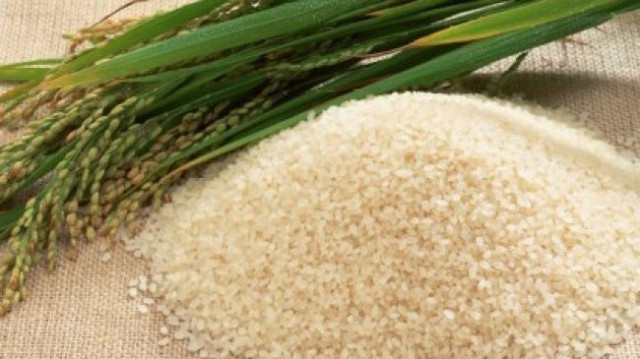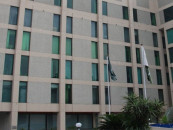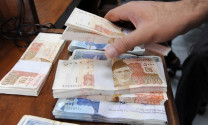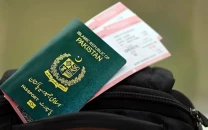Rice exporters overcome challenges as sales grow 19%
Ship 3.06m tons worth $1.87b to overseas markets in Jul-Dec 2024

Pakistan has achieved a remarkable progress in rice exports during the first half of the current fiscal year, recording a 19% increase despite facing significant global challenges. This surge in exports is likely to continue in the second half as well.
According to official statistics, from July to December 2024, Pakistan exported 3.06 million tons of rice worth $1.87 billion, compared to 2.57 million tons worth $1.64 billion in the same period of last year.
Basmati rice exports exhibited an impressive growth of 30.4%, with shipments of 416,491 tons valuing at $433.81 million, up from 367,465 tons worth $318.85 million last year. Non-Basmati rice exports grew 17.2% to 2.65 million tons with total value of $1.44 billion, compared to 2.25 million tons worth $1.27 billion in the corresponding period of 2023.
"This growth came despite challenges such as the ongoing Red Sea conflict, which disrupted trade routes and increased logistical costs. Exporters managed to adapt by rerouting shipments and efficiently managing these disruptions," commodities' expert Hamid Malik remarked.
He said that additionally India's lifting of its rice export ban, the removal of its minimum export price cap and a massive devaluation of the Indian rupee created a competitive pricing environment in the global market. India's aggressive use of subsidies and diversion of public distribution system (PDS) rice for export further pressured global markets.
However, Pakistan's premium-quality rice, particularly its aromatic Basmati, continued to command strong demand internationally. Other stakeholders in the industry said that despite geopolitical instability, Pakistani rice exporters efficiently adapted to minimise disruptions. A former chairman of the Rice Exporters Association of Pakistan (REAP) emphasised that Pakistan's focus on quality and its ability to navigate unfair trade practices, such as India's violation of World Trade Organisation (WTO) agreements, had been the key to sustaining growth.
He added that Pakistani rice was likely to gain further momentum this year in terms of exports as the commodity was gaining acceptance and exporters were trying to find new markets.
"Recently, an agreement between the Trading Corporation of Pakistan and the Directorate General of Food Bangladesh for export of our Basmati rice is a fresh and welcoming start for the new year." Other rice exporters are optimistic about a further increase in exports in 2025. Despite facing stiff competition from India, which recently lifted its ban on exports, Pakistani exporters remain confident in their ability to capture international markets. REAP projects rice exports could reach $4.5 billion by the end of current fiscal year 2024-25.
"The positive outlook is supported by favourable planting conditions and sufficient irrigation water throughout the growing season, which are expected to result in a promising harvest," medium-scale rice grower and exporter Tariq Sikandar said.
Additionally, efforts to improve the quality of rice and adhere to international standards are ongoing. The establishment of an analytical lab to ensure scientific assessment of maximum residue levels in rice was also being considered and it could help in further lifting the standards of the commodity, he added. Pakistani rice continues to be a preferred choice in markets such as Kenya, Malaysia and Indonesia, where demand remains strong. Exporters are also exploring new markets in Africa and other regions to diversify their customer base.
"With these positive outcomes, we are confident that the country's rice exports will continue to rise, contributing significantly to the national economy. However, to sustain this growth, there is a need for continued focus on innovation, policy reforms and effective marketing strategies to further differentiate Pakistani rice in competitive markets," Sikandar said. "The combined efforts of farmers, exporters and the government have positioned Pakistan's rice industry for a promising future."






















COMMENTS (1)
Comments are moderated and generally will be posted if they are on-topic and not abusive.
For more information, please see our Comments FAQ